Biology Cell Study Sheet
Unlock all answers in this set
Unlock answersquestion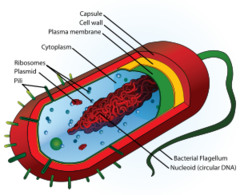
Prokaryotes

answer
- Both types of cells contain DNA,Cytoplasm,and cell membranes - Prokaryotic cells are generally smaller and simpler than eukaryotic cells. - Do not have a nucleus - Despite their simplicity, they carry put every activity associated with living things - They grow, reproduce, respond to the environment etc.
question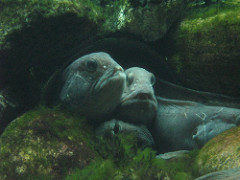
Eukaryotes

answer
- Always single celled organisms - Generally larger and more complexed than prokaryotic cells - Most eukaryotic cells contain dozens of structures and internal membranes, and many are highly specialized - Eukaryotes can be single-celled (protists) or multi cellular ( animals and plants )
question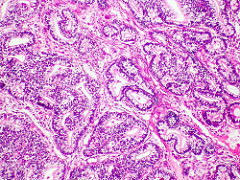
Cytoplasm

answer
- The fluid portion of a cell - Composed of: - Cytosol - a complex mixture of cytoskeleten filaments dissolved molecules, and water that fills much of the volume of the cell - Carbohydrates, lipids, and proteins -Organelles
question
Nucleus

answer
- In the same way that the main office controls a large factory, the nucleus is the control center of the cell - The nucleus contains nearly all the cells DNA and, with it, the coded instructions for making proteins and other important molecules.
question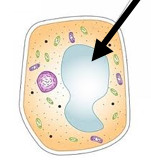
Vacuoles

answer
- Membrane-enclosed sac-like structures that store water salts, and organic molecules.
question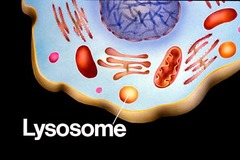
Lysosomes

answer
- Small organelles filled with enzymes that break down large molecules and organelles that are no longer useful
question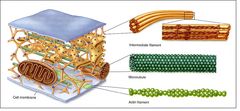
Cytoskeletan

answer
- A network of protein filaments; it helps the cell maintain its shape and is involved in movement
question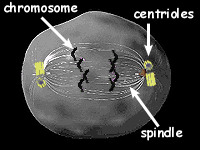
Centrioles

answer
- Organelles made from tubulins; they help organize cell division in animal cells
question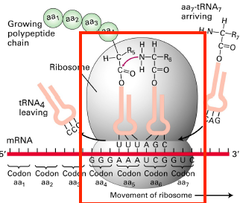
Ribosmes

answer
- Small particles of RNA and protein found throughout the cytoplasm of all cells; they produce proteins by following coded instruction from DNA
question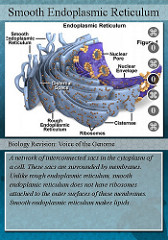
Endoplasmic Reticulum

answer
- An internal membrane system where lipid components of the cell membrane are assembled, along with proteins and other materials
question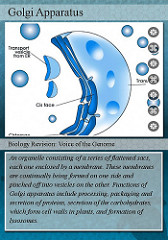
Golgi Apparatus

answer
- An organelle that appears as a stack of flattened membranes; it modifies, sorts, and packages other materials from the ER for storage in the cell or release outside the cell
question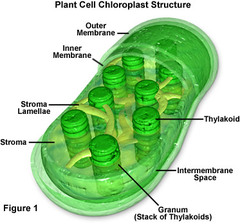
Chloroplasts

answer
- Capture the energy from the sunlight and convert it into food that contains chemical energy in a process called photosynthesis - Cells of plants and some other organisms contain chloroplasts, which contain chlorophyl
question
Mitochondria

answer
- Found in nearly all eukaryotic; they convert the chemical stored in food to usable



